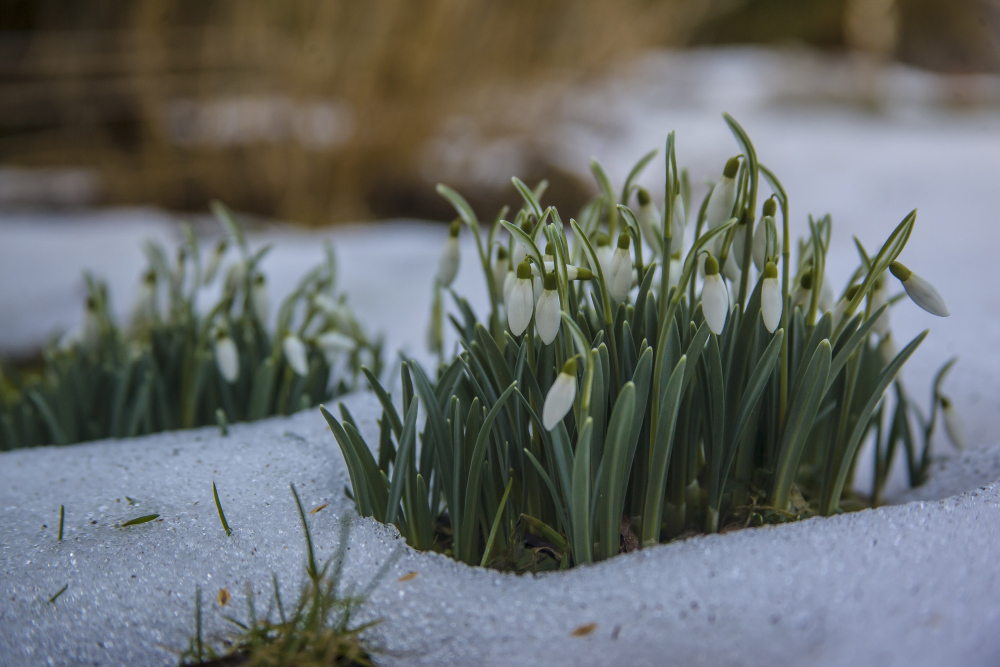How To Safely Melt Ice And Protect Your Plants

NORTH TEXAS (CBSNewsTexas.com) – Happy first day of spring!
Unfortunately, it doesn’t really feel like spring today.
Morning temperatures are in the upper 30s, but it feels like the low 30s with a breezy wind.
There will be mostly cloudy skies today and highs only in the upper 50s, with increasing southerly winds this afternoon.
Hopefully, this adorable pic of Maggie all dressed up for St. Patrick’s Day will bring a smile to your face!
Source: CBS NEWS TEXAS
Are the plants around your sidewalks or driveway looking burned or fading out during the icy winter? It’s time to reconsider your deicer and switch to a more plant-friendly option. Traditional deicers can harm both concrete and vegetation, causing significant damage. Instead, consider using a salt-free and safe ice melt that won’t harm your plants or your property. Protect your outdoor environment while ensuring safe and effective snow and ice removal.
In this article, we’ll explore some ways to safely melt ice and keep your plants healthy.
Use A Salt-Free Deicer That Doesn’t Damage Plants
Rock salt (sodium chloride) is the most common ice-melting agent, although you may also encounter ice-melt products composed of calcium chloride, magnesium chloride, or potassium chloride.
Plant life can be vulnerable to chlorides. For maximum health, plants only require a trace quantity of sodium. When high amounts of salt seep into the earth, it prevents plants from absorbing nutrients like potassium and calcium, resulting in sickly plants.
Rock salt and other ice melt chemicals are toxic to plants even in small doses. The salt draws moisture from plants. It is the cause of shriveled, dead shrubs and trees, dry leaf tips, and dying leaves on evergreens in winter or fresh leaves in spring. Because of this reason, chlorides are also not a safe ice melter for wood decks.
The chloride salts in all ice melts are caustic and poisonous, killing the majority of plant life near roads and driveways where they are used. Anything planted near salt or ice melt-treated areas is at risk of being damaged by the dissolved salts.
Salt sprayed from surrounding highways can drop on the evergreen tree and shrub branches and leaves, drying them out on contact, harming the leaves, and making the plant less cold, resilient, and more likely to freeze.
To protect your plants during the winter months, it’s important to choose an ice melt product that is both effective and safe. Instead of traditional salt-based options that can harm plants and pollute the environment, consider using an eco-friendly alternative like Safe Paw. This plant-safe ice melt is widely available and made with natural, urea-based ingredients that won’t damage your greenery. In fact, it can even help promote growth during challenging winter conditions. Make the switch to Safe Paw and protect your plants and the planet this winter.
Snow Shovelling
Another way to protect your plants is to shovel the snow and ice as soon as possible. The longer the ice sits on your plants, the more damage it can cause. Shoveling also reduces the amount of ice melt needed, reducing your overall use of chemicals and protecting your plants in the process.
Conclusion
While melting ice is essential for winter safety, it’s equally important to protect your plants and the environment. Choosing a plant-safe ice melt can help prevent damage and keep your plants healthy. Additionally, shoveling the ice and snow as soon as possible can reduce the need for chemicals and minimize the risk of plant damage. With these tips, you can safely melt ice and keep your plants thriving all winter long.

